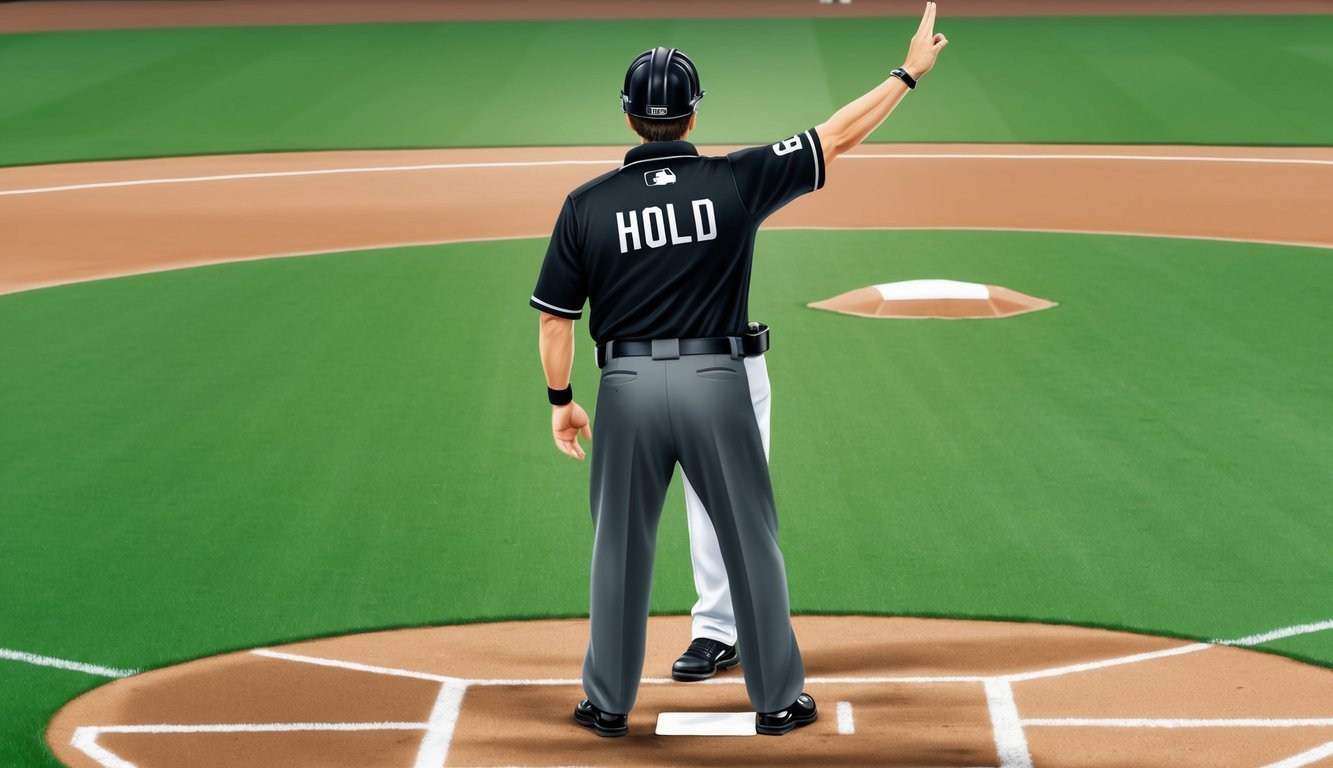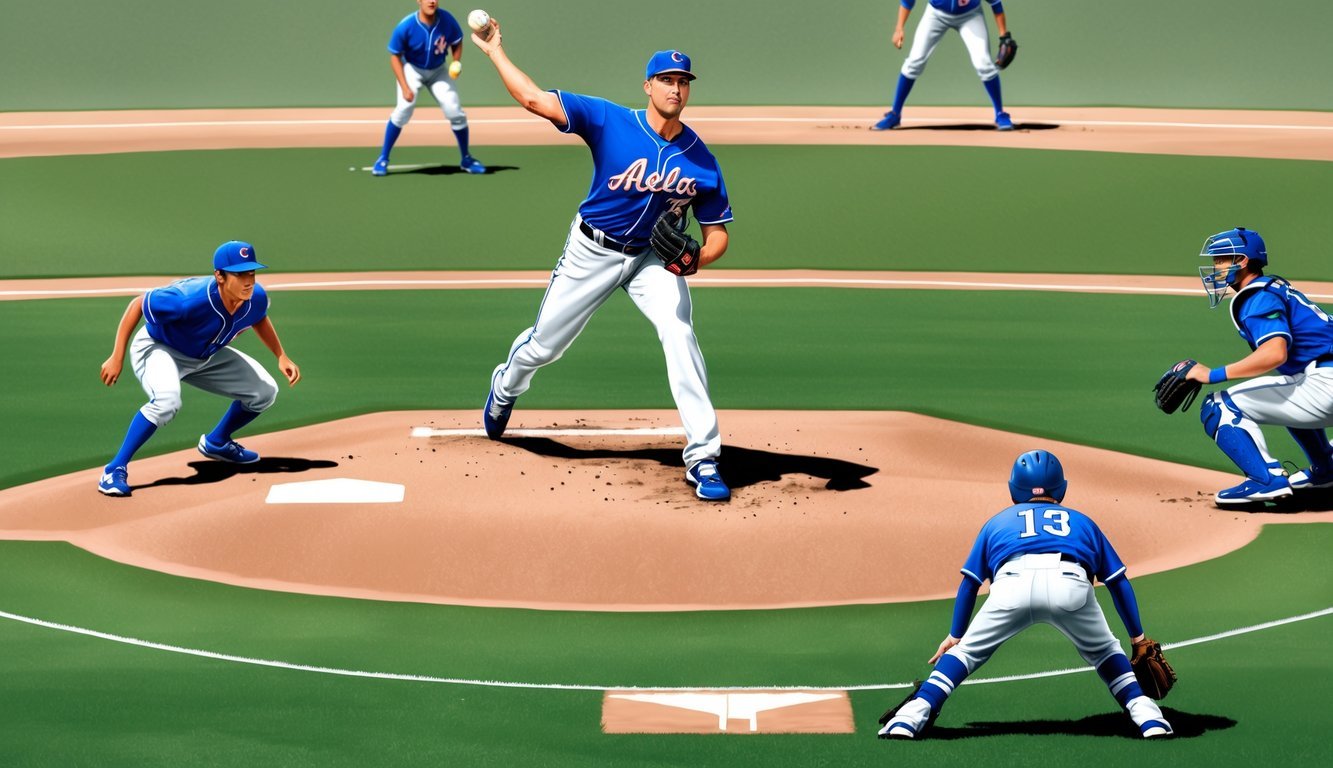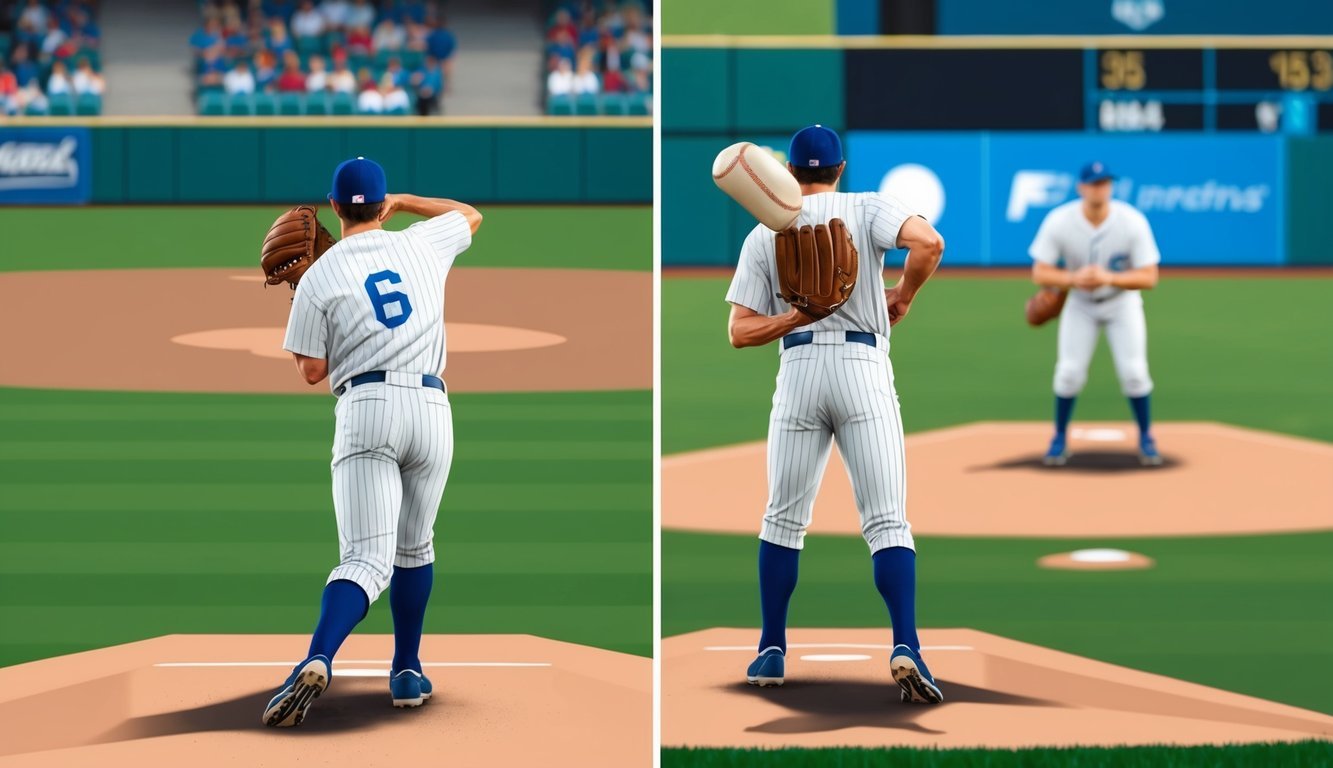Baseball fans often focus on flashy statistics like home runs and strikeouts, but there’s a lesser-known metric that plays a crucial role in evaluating relief pitchers: the hold.
This statistic recognizes the contributions of middle relievers who bridge the gap between starters and closers.
A hold is awarded to a relief pitcher who enters the game with a lead of three runs or fewer, records at least one out, and leaves without relinquishing that lead. It’s a way to measure the effectiveness of setup men and other relievers who don’t typically earn saves.
The hold was introduced in the 1980s by statisticians John Dewan and Mike O’Donnell to give credit to these unsung heroes of the bullpen.
While not an official MLB statistic, holds have gained popularity among fans and analysts alike.
They provide valuable insight into a team’s bullpen strategy and the performance of individual relievers.
As baseball continues to evolve, the hold statistic helps shine a light on the important work done by pitchers in the middle innings of close games.
Understanding the Basics of a Hold

A hold is a crucial statistic in baseball that highlights the effectiveness of relief pitchers.
It measures their ability to maintain a lead in specific game situations.
Defining a Hold
A hold occurs when a relief pitcher enters the game in a save situation, records at least one out, and leaves without surrendering the lead.
The pitcher must not finish the game to earn a hold.
This statistic recognizes the contributions of middle relievers and setup men who bridge the gap between starters and closers.
Holds are awarded in tight games where the lead is three runs or fewer.
For example, if a team is up 3-1 in the 7th inning and a reliever pitches a scoreless inning before handing it off to another pitcher, they’ll likely earn a hold.
The Role of Relief Pitchers
Relief pitchers play a vital role in preserving leads and maintaining momentum.
They often face high-pressure situations, coming in with runners on base or in late innings of close games.
Relievers who specialize in holds typically pitch in the 7th or 8th innings.
Their job is to protect the lead and set up the closer for a save opportunity.
These pitchers need to be mentally tough and able to perform under pressure.
Some key skills for successful relief pitchers include:
- Quick warm-up routines
- Ability to pitch on consecutive days
- Diverse pitch repertoire
- Strong situational awareness
Differentiating Between a Hold and a Save
While holds and saves are both awarded to relief pitchers, they have distinct differences:
| Hold | Save |
|---|---|
| Can be earned by multiple pitchers in a game | Only one pitcher can earn a save per game |
| Pitcher doesn’t finish the game | Pitcher typically finishes the game |
| Not an official MLB statistic | Official MLB statistic since 1969 |
Saves are generally considered more prestigious, but holds provide valuable insight into a pitcher’s effectiveness in high-leverage situations.
Both statistics help teams evaluate relief pitcher performance and make strategic decisions about bullpen usage.
The Process and Criteria for Awarding a Hold

Holds in baseball recognize relief pitchers who maintain their team’s lead in specific game situations.
The statistic measures a pitcher’s effectiveness in bridging the gap between starters and closers.
Statistical Requirements
To earn a hold, a relief pitcher must enter the game in a save situation.
This means the team is leading by three runs or fewer, or the potential tying run is on base, at bat, or on deck.
The pitcher must record at least one out without relinquishing the lead.
Holds aren’t awarded to starting pitchers or pitchers who earn a win or save in the same game.
A pitcher can receive a hold even if they allow inherited runners to score, as long as the team maintains the lead.
Game Conditions Influencing a Hold
The inning a pitcher enters doesn’t affect hold eligibility.
However, the game situation is crucial.
A pitcher entering with a four-run lead in the sixth inning won’t be eligible for a hold, even if they pitch well.
Bases loaded situations can impact hold opportunities.
If a reliever enters with the bases full and a three-run lead, they’re in a save situation and can earn a hold by recording an out without losing the lead.
Pitcher Performance and Holds
While holds measure game impact, they don’t always reflect a pitcher’s effectiveness.
A reliever can earn a hold despite allowing baserunners or runs, as long as the lead is preserved.
ERA isn’t directly tied to holds, but it often correlates with a pitcher’s ability to earn them consistently.
Pitchers with lower ERAs tend to be more reliable in hold situations.
Managers often use specific relievers in hold situations based on their track record and matchups.
These pitchers, sometimes called setup men, play a crucial role in preserving leads for closers.
Strategic Importance of Holds in Baseball

Holds play a crucial role in modern baseball strategy, influencing game outcomes and team dynamics.
They showcase the value of middle relief pitchers and their impact on a team’s success.
The introduction of free agency in baseball further amplified the importance of holds, as teams sought to build stronger bullpens and maximize their late-game advantages.
By investing in skilled middle relievers, clubs can effectively shield their star closers and maintain leads more consistently.
Consequently, holds have become a key statistic that helps evaluate pitcher effectiveness and shapes roster construction in the ever-evolving landscape of the sport.
The Impact of Hold on Game Outcomes
Holds directly contribute to preserving leads and securing wins.
When setup men successfully hold the lead, they increase their team’s chances of victory.
A reliever who consistently earns holds helps maintain momentum in close games.
Pitchers who excel at earning holds often face the heart of the opposing lineup in high-pressure situations.
Their ability to navigate these challenges can make or break a game’s outcome.
Holds also reflect a pitcher’s effectiveness in shutting down rallies.
By preventing runs in the late innings, hold-earning relievers protect slim leads and keep their team in control.
Setting Up for the Closer
Holds are integral to the bridge between starters and closers.
Setup men who earn holds create ideal situations for closers to finish games.
Effective hold pitchers typically work the eighth inning, facing tough batters before handing over to the closer.
This role requires mental toughness and the ability to perform under pressure.
By securing holds, these pitchers preserve save opportunities for closers.
This partnership between setup men and closers forms a formidable late-game strategy.
Managing the Pitching Staff
Holds influence how managers utilize their bullpen resources.
Reliable hold pitchers allow for more strategic use of the entire pitching staff.
Managers can pull starters earlier, knowing they have dependable relievers to bridge the gap.
This strategy helps preserve starting pitchers’ arms over the long season.
Hold situations provide opportunities to develop young relievers in meaningful game scenarios.
It allows teams to groom future closers while maintaining a competitive edge.
Pitchers who consistently earn holds often become valuable trade assets.
Their specialized skills can significantly bolster a team’s playoff chances during crucial stretches of the season.
Historical and Record-Holding Moments

The hold statistic has created new opportunities to recognize the contributions of middle relievers in baseball.
While not an official MLB stat, it has shed light on some impressive performances and careers.
Famous Holds in MLB History
Tony Watson’s 2014 season stands out in hold history.
The Pittsburgh Pirates reliever racked up 34 holds, showcasing remarkable consistency.
Arthur Rhodes also had a stellar year in 2001, notching 32 holds for the Seattle Mariners.
These performances highlighted the value of shutdown middle relief.
Mike Stanton’s career is noteworthy for holds.
The left-hander accumulated 266 holds over his 19-year career, demonstrating longevity and reliability in high-pressure situations.
Holds and Baseball Records
The single-season record for holds is 41, set by Joel Peralta in 2013 with the Tampa Bay Rays.
This mark underscores the specialized nature of middle relief in modern baseball.
Since 1986, the hold has been tracked by statisticians John Dewan and Mike O’Donnell.
While not an official MLB statistic, it’s become a key metric for evaluating relief pitchers who don’t typically earn saves.
Notable Relief Pitchers and Their Holds
Arthur Rhodes holds the career record with 231 holds over his 20-year career.
His durability and effectiveness in late-inning situations made him a manager’s go-to option.
Tony Watson has been one of the most consistent hold earners in recent years.
From 2013 to 2017, he averaged over 30 holds per season, showcasing remarkable reliability.
Joel Peralta’s 2013 season stands out not just for his record 41 holds, but for his overall dominance in high-leverage situations.
His performance that year epitomizes the impact a skilled middle reliever can have on a team’s success.
Analyzing Holds for Fans and Fantasy Leagues
Holds have become an important metric for evaluating relief pitcher performance.
This statistic offers insights into middle relievers and setup men who play crucial roles in preserving leads.
Understanding Holds in Fantasy Baseball
Fantasy baseball leagues increasingly incorporate holds as a scoring category.
This addition recognizes the value of non-closing relief pitchers.
Managers who understand holds gain an edge in player selection and team construction.
Holds are awarded to relievers who enter a game in a save situation, record at least one out, and leave without surrendering the lead.
This creates opportunities for savvy fantasy players to find value in middle relievers who might otherwise be overlooked.
Some leagues combine saves and holds into a single category.
This strategy elevates the importance of all high-leverage relievers, not just closers.
Uses of the Hold Statistic Beyond MLB
Video games like MLB The Show have integrated holds into their gameplay and franchise modes.
This inclusion adds depth to player ratings and team management decisions.
Holds also factor into contract negotiations and arbitration hearings for real MLB players.
Teams use this stat to evaluate the contributions of their bullpen arms.
Fantasy baseball platforms often provide hold projections and rankings.
These tools help managers identify potential breakout relievers and late-round draft steals.
Identifying Trends and Value in Relief Pitching
Teams like the Tampa Bay Rays have popularized innovative bullpen strategies.
These approaches often lead to more holds for their relievers.
Setup pitchers, who consistently earn holds, can be as valuable as some closers.
They often face the heart of the opponent’s lineup in high-pressure situations.
Managers should look for relievers with strong strikeout rates and low walk rates.
These skills typically translate to success in hold situations.
Some pitchers may accumulate holds without stellar ERAs or WHIPs.
It’s important to balance the quantity of holds with overall pitching quality when evaluating relievers.
